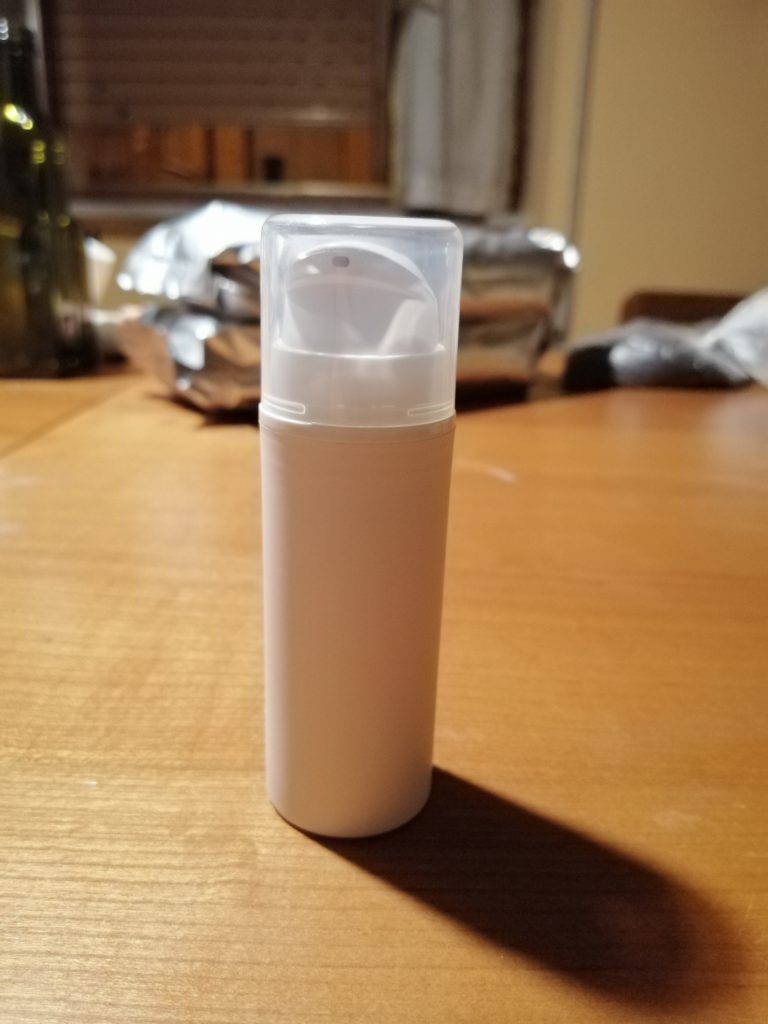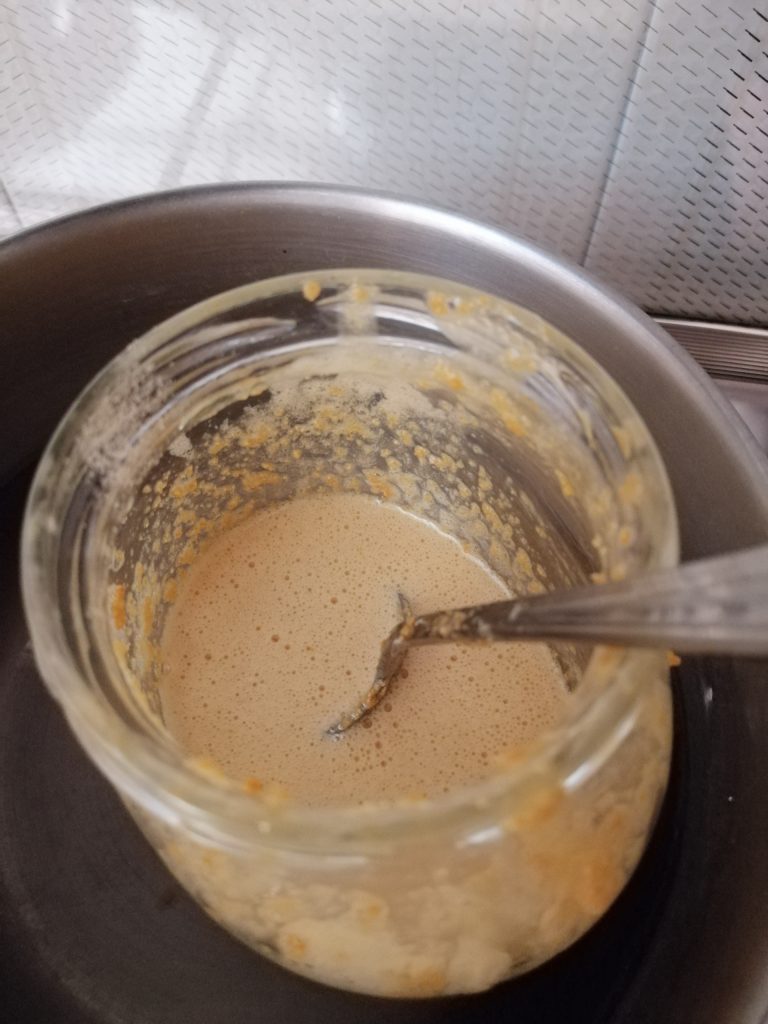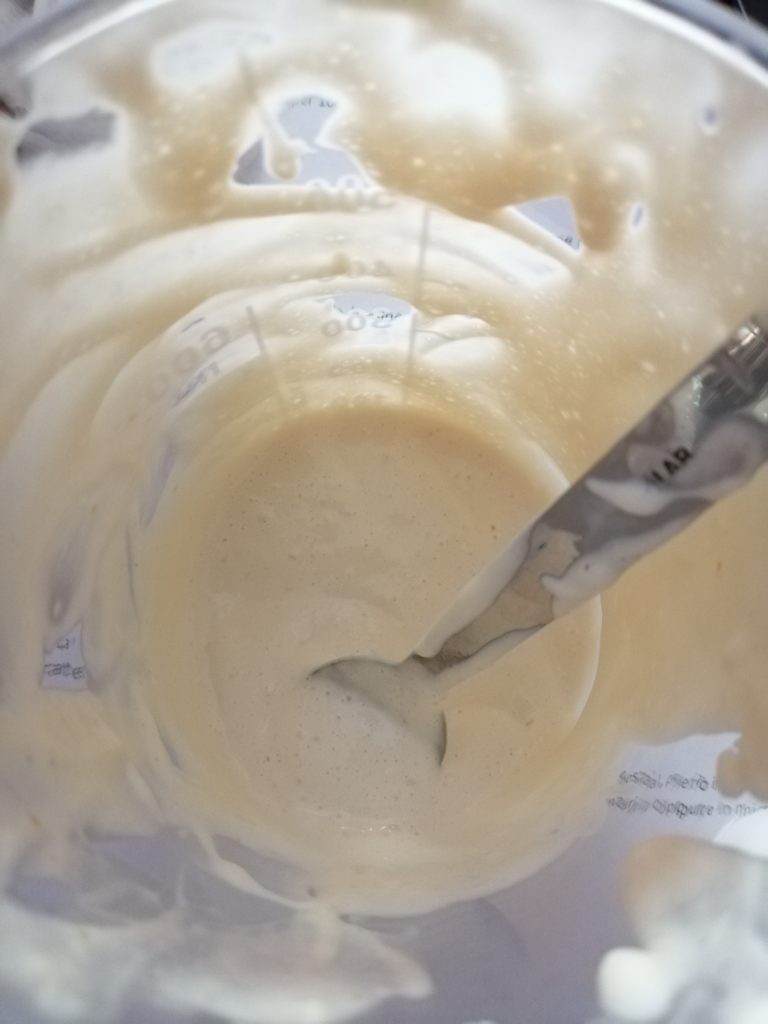
The commercial cleansers have the huge advantage of being ready to use: you only need to buy and use them! Unfortunately, though, such products are usually made (at least largely) with synthetic chemical substances, which ensure some advantages (like a low production cost, a perfect control upon features like texture, playing time, white film formation or prevention, color, persistence, etc.) on one side, but that, on the other side, are not completely healthy for our skins.
Moreover, the products we buy do not always behave the way we desire: how many eye contour cleansers, for instances, dry the skin (micellar waters in primis!) and/or irritate the eyes?
So, making a cleanser at home may be a healthful, cheap and – why not? – enjoyable alternative solution. Even if I don’t personally need such product (eh, men wearing makeup seems to be quite rare, at the moment… ![]() ), I tried to make a very simple cleanser. And it seems to work really fine (someone other than me says!): it removes the makeup quite well and leaves the skin well hydrated. It should be rinsed off, otherwise it can leave the skin a little greasy (after all, cleansers are rinse-off products!).
), I tried to make a very simple cleanser. And it seems to work really fine (someone other than me says!): it removes the makeup quite well and leaves the skin well hydrated. It should be rinsed off, otherwise it can leave the skin a little greasy (after all, cleansers are rinse-off products!).
Let’s have a look at the procedure. First, I’ve diluted the lecithin in sunflower oil in order to render it more easily miscible in the fat phase.
Diluted lecithin
Ingredients:
- 60g granular soy lecithin
- 40g sunflower oil (food grade)
Procedure:
It’s that easy! You only need to warm the oil in a water bath and add the lecithin in small batches, stirring each now and then with a spoon. It’s really important to use a thermometer since the very beginning because you must avoid to let the temperature rise above 65-70°C!
After abt. 45 minutes, turn off the flame and blend the oil-lecithin mix with an immersion blender, trying to dissolve the lecithin at your best. Filter the mix when still hot with a fine mesh strainer (in order to remove any lump) and put in a glass jar. Put the lid on the jar when the diluted lecithin is cold (room temperature). It may be stored for several months (since it doesn’t contain water) in a cool and dry place (NOT in the fridge!).

Now, let’s see how to make the cleanser with a “cold emulsion” process.
Cleanser
Ingredients (for 100g final product):
Phase A:
Distilled water q.s. to 100g (that is, abt. 61.4g)
Xanthan gum 0.5g
Glycerine 5g
Phase B:
Sunflower oil 19g
Vanilla infused oil 1g
Diluted lecithin 12g – it corresponds to abt. 7g granular lecithin
Phase C:
Tocopherol (vit. E) 0.5g
Preservative (Cosgard by AromaZone) 0.6g
Procedure:
- Boil the water for a couple of minutes, then turn the flame off and wait until the water cools down to room temperature (boiling water is not necessary, but I prefer to do it).
- In a clean glass recipient (I used a Pirex glass beaker), prepare the xanthan gel: weigh the glycerine, add the xanthan gum dispersing it well into the glycerine with a spoon, and then add the water little by little, stirring continuously until the gel forms.
- In another glass recipient (another beaker), mix the diluted lecithin, the sunflower oil and the vanilla infused oil, stirring well so to amalgamate the ingredients.
- Pour the phase A into the phase B, stirring carefully with a spoon first, and then with an immersion blender until the emulsion forms (the cream becomes a light beige).
- Add tocopherol and stir.
- Add the preservative, stir well and measure the pH, possibly adjusting it with lactic or citric acid (if the pH is to be lowered) or with sodium hydroxide or bicarbonate of soda (if the pH is to be raised). For the periocular zone, the cleanser pH must be 6.5; otherwise we can lower it up to pH 5,5 (Cosgard works well in an acidic environment, that is with pH less than 7).
- Store the cleanser in into a clean container.

This cleanser is a light beige W/O emulsion; it is quite stable and rather fluid . It cleanses the skin gently but effectively, removing even the most tenacious makeup. It has a faint odor, since it does not contain essential oils.
Usage: apply it onto the whole face, the eye contour and the lips, with the help of a cotton pad wetted with some lukewarm water and then well squeezed. Rinse then with lukewarm water and apply a tonic lotion suitable for your skin.
Notes
The recipe calls for 12g diluted lecithin, that contains abt. 7g pure lecithin and abt. 5 g sunflower oil. So, the overall oil content in the formula is abt. 25g (vanilla infused oil included).
You can vary both the amount and the kind of fat, according to which product you want to obtain: for an eye contour cleanser, you’d better use 25-27% gentle oils (e.g., sunflower, sweet almonds, rice); if you want to produce a face cleanser, you can also use heavier fats. In any case, use 25-35% total fats.
Essential oils and perfumes
The lecithin has a quite strong smell (even though it can be barely perceived at a so small percentage), so you may want to mask it with some perfumed ingredient. The vanilla infused oil called for in this recipe allows you to obtain a faint but pleasant odor. Surely it may be omitted, or it may be used in a greater amount too, since it is a non-irritating ingredient.
Certainly, you can use essential oils or perfumes. If you want to make an eye contour cleanser, you must take care to use hypoallergenic perfumes or essential oils which do not irritate the eyes, in an adequate amount (max 10 drops per 100g finished product). The essential oils and perfumes should be added at the end, together with the other phase C ingredients.



